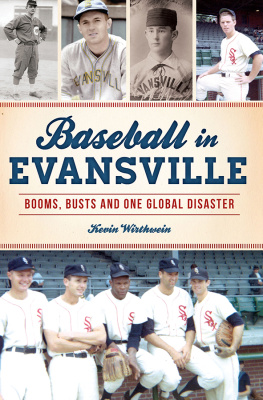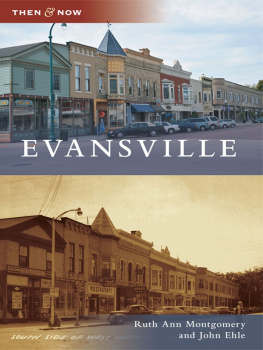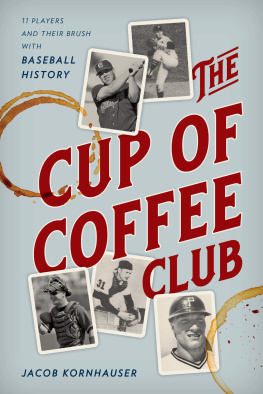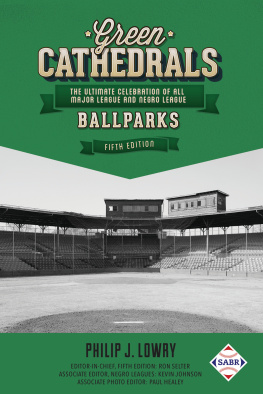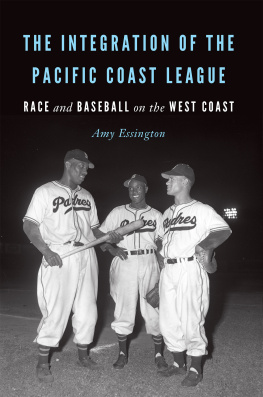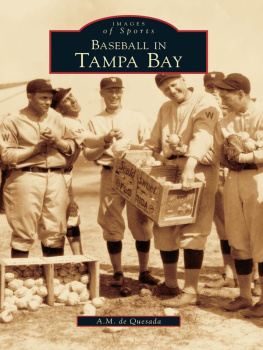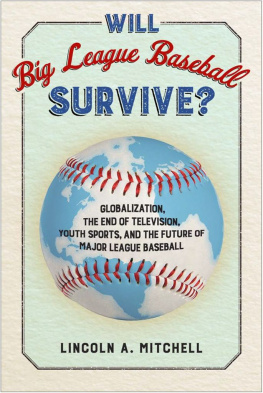


Published by The History Press
Charleston, SC
www.historypress.com
Copyright 2020 by Kevin Wirthwein
All rights reserved
Front cover, from left to right: authors collection; authors collection; Indiana Historical Society; authors collection; bottom: authors collection.
First published 2020
E-book edition 2020
ISBN 978.1.43966.923.5
Library of Congress Control Number: 2019954236
Print edition ISBN 978.1.46714.558.9
Notice: The information in this book is true and complete to the best of our knowledge. It is offered without guarantee on the part of the author or The History Press. The author and The History Press disclaim all liability in connection with the use of this book.
All rights reserved. No part of this book may be reproduced or transmitted in any form whatsoever without prior written permission from the publisher except in the case of brief quotations embodied in critical articles and reviews.
To my late parents, Alfred Francis Wirthwein and Virginia Mae Wirthwein.
And to Papa Bear, who showed me baseball.
CONTENTS
ACKNOWLEDGEMENTS
History books, Ive learned, require skills beyond simply putting words onto pages. Most of those other skills I struggled to learn along the way. None of this would have been possible without the patience of some, the encouragement of many and the support of all.
First, to my mother, Virginia, who passed away while I was rounding third and heading home on this work. She never doubted and always loved and encouraged me. To my wife, Erin, for her patience and love, and to Lauren, Allison, Abby and Andrea, for the perspective that four unique daughters provide. The support of all family members was special. Like my mother, my siblingsDavid, Susan and Lisaalways assumed this book was a fait accompli when I doubted it myself.
My brother Chris, an author in his own right, is also a baseball memorabilia collector and historian. Hell never know how many offhanded author-like suggestions he made that I put into use. His love of baseball made no discussion of my topic a nuisance to him. Vince Waldron is another author who provided inspiration and validation through email exchanges. Vince is the author of The Official Dick Van Dyke Show Book. Youll have to read this book to understand the connection.
Special thanks to Willard Library archivist Patricia Sides for going out of her way to help me meet deadlines during the busiest week of her year. Jennifer Greene of the University of Southern Indiana provided invaluable assistance. Posthumous gratitude to George Spohr, late editor of the Evansville Courier and Press. George was incredibly responsive to my requests to use material from his paper. Indiana Historical Society, Evansville Vanderburgh Public Library and Bosse Field staff members amazed me with their warmth.
Thank you, friends and acquaintances, for cheering me from the beginning. Mark and Taylor Abell, Rick Wambach, Mark Senzell, Lois Unfried, John Moeller, Jeff Gabbard and Carol Schaefer all assisted in special ways.
INTRODUCTION
This book was to be about the Evansville White Sox, a Class-AA club that lasted all of three years, from 1966 to 1968. The Esox are my all-time favorite team. I didnt want to aim too high in my first book. Fifty years after watching them play in my first live game, I still had a lot to learn. I needed one brief chapter encapsulating the history of baseball in Evansville to open the book, then on to my beloved Esox. I thought a quick run through the Evansville baseball history books for material would be easy. What I found was disappointing. There were no Evansville baseball history books that started from the beginning. Most began around 1915, but I found that my hometown was playing baseball at least fifty years before that.
The people of Evansville have watched and played baseball since just after the Civil War. In 1877, the city entered a team into what is believed to be the first minor league. Despite high hopes, it failed. Keeping professional baseball in the river city was nearly impossible throughout the 1800s. Financial failures were the norm. Scandals and misappropriations were plenty. Colorful characters and weird events were everywhere. Teams came and went. When professional teams folded, the city filled its summers with semiprofessional and amateur ball. The history of Evansville baseball during the nineteenth century is extraordinary.
The twentieth century had its own unique influences, both good and bad. A couple of world wars and devastating floods interrupted the professional game. So did a pretty bad depression. Tragedies led to triumphs in some cases. An opportunistic mayor turned one tragedy into a historical first: the construction of the first municipally owned ballpark in the nation. Evansville mayors fought to keep professional baseball in Evansville. Most succeeded.
One future mayor loved baseball so much that he supported the citys first team in the Negro Southern League. That team consistently drew more spectators than did its white counterparts. Years without professional baseball were much like they were in the 1800s, filled with semipro excellence from both white and Negro teams. Wartime pitted leagues of factory and shipyard workers against each other. War also brought major-league spring training to Evansville.
Minor-league baseball exuberance peaked after World War II until the influences of entertainment and comfort technologies brought the system to its knees. Staying home to watch a game on television meant you could stay cool and grab a cold beer. At Evansvilles stadium, beer was not allowed and air-conditioning not feasible. A crumbling ballpark was the death knell for the citys most stable franchise and its iconic manager. Then a super-salesman mayor resurrected professional baseball after eight long years of trying. A colorful local millionaire established Evansville as headquarters of a third major league, with disastrous results. The story of his attempt to challenge baseballs elites is most intriguing because of its enormity.
Evansville baseball history is filled with triumphs and tragedies, failures and comebacks, scandals and scoundrels, injuries and healing, heroes and heartwarming stories, movie stars and musicians, life and death.
As the story of the first one hundred years ended, another story of triumph began. It was all so interesting and sometimes romantic.
THE CIVIL WAR TO THE
TWENTIETH CENTURY
18651900
THE BEGINNING OF BALL CLUBS
Organized baseball was difficult to define in the latter third of the 1800s. Independent organized leagues formed as early as 1877. The Northwestern League signed the first agreement with the major leagues in 1882, called the Tripartite Agreement. Structure was a long way off in the summer of 1865 as the nation embarked on recovery from a civil war and the assassination of a president. Baseball helped the healing.
Evansvilles Crescent City Ball Club formed in 1865, as the war ended. Club members played choose-up and challenge games against all comers. Games were high-scoring and typically lasted four innings. Money usually changed hands. The Crescent City club had its own ball grounds. The Evansville Daily Journal followed games from around the country. Of a game between the National Club of Washington, D.C., and the Atlantics of New York, the paper pondered, Hadnt the Evansville boys better challenge the victors for the championship? The pride a city had in its hometown boys permeated the national landscape.
Next page
